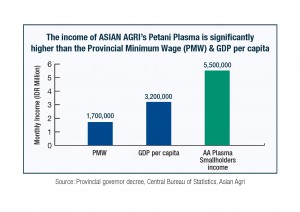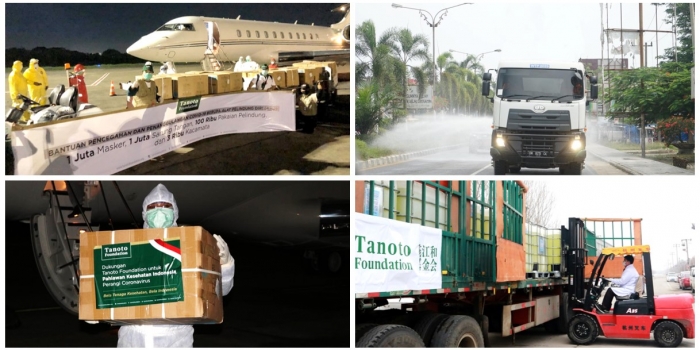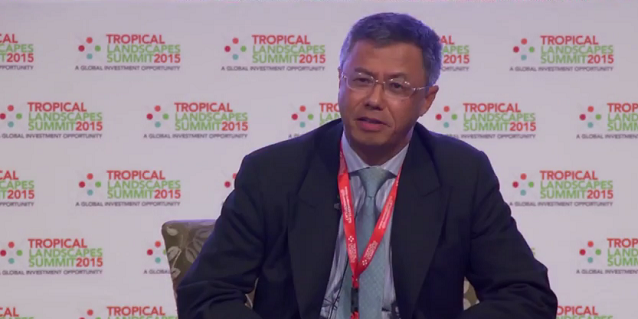Indonesia, Southeast Asia’s largest economy continues to see growth momentum despite the slowdown in the global economy. The World Bank expects Indonesia’s GDP to expand to 5.2 percent this year, picking up moderately to 5.5 percent in 2016; largely due to private consumption growth remaining relatively stable, increase in fixed investment spending and a gradual recovery of export volumes and infrastructure spending.
Indonesia’s economic activity is largely driven from its capital of Jakarta where we see the congregation of talented people, migrant workers exchanging rural for urban life, domestic capital and foreign investors all clamouring for a slice of the growth pie. This concentration of urban growth and change is reflected in numbers — 53 percent of the population lived in urban areas in 2010 and it is predicted that by 2025, it will reach 65 percent.
At times, such urbanisation has helped alleviate poverty levels and increased expansion of an emerging urban middle class. However, the uneven production, distribution and access to goods and services such as healthcare and employment, have caused growing disparity. Today, figures have shown that some 30 million Indonesia people continue to live below the poverty line today.
Indonesia is now the fourth most populous country in the world with a total population of 250 million people, of which 43 percent are below the age of 25 and nearly 50 percent of the population continues to live in the rural areas. How can Indonesia unlock the economic potential of the vast rural population and harness its growth to the overall success of the country?
Agriculture as Driving Force
The agriculture sector has been identified as one of Indonesia’s key drivers of economic growth, comprising 15 percent of GDP in 2014. The sector is the main source of employment in rural areas where poverty is more prevalent.

Source: Provincial governor decree, Central Bureau of Statistics, Asian Agri
According to a World Bank study – Agriculture and Poverty Reduction – GDP growth that originates from agriculture is estimated to be at least twice as beneficial to the poorest segment of a country as growth from non-agricultural sectors. It is therefore key to link overall and continued sustainable growth, as well as the reduction of poverty, with an increased focus on agricultural sectors by awakening and assisting this useful demographic. In 2012, the agriculture sector employed more than 49 million individuals, which represented more than 41 percent of the total workforce and more than 36 percent of the country’s population. It is mainly food production that engages the rural population in terms of employment and income.
It is clear that Indonesia must be able to elevate the value of this industry and empower its rural populations to effectively optimise the use of the country’s natural resources. At the industry level, this includes hard work to increase a processing industry that will provide high added value. It also requires a persistent investment in skills and knowledge training of the local people to uplift the overall quality of human capital for the agriculture sector.
The Indonesian government has put in various efforts and programmes to eradicate poverty, one of which is known as the Plasma Scheme. Established in 1987, Plasma is a government initiative aimed at improving Indonesia people’s standard of living by relocating dwellers from highly populated areas to regions with lower population density. The initiative gives transmigrants 2 hectares of land in the region of Riau, enabling them to become smallholders who receive help from private sector companies to become independent plantation growers. Such aid comes in the form of imparting growing techniques, land management best practices, and even assistance to achieve internationally recognised certification that opens up market access to the smallholders. The impact of this programme on the living standards of the local communities is evident. Today, smallholders’ average monthly earnings is significantly higher than the provincial GDP per capita (3.18m IDR) and minimum wage (1.7m IDR).
Bumpy Road Ahead
Still, several pertinent issues continue to impede the progress of local communities living in these rural regions. These issues are often entangled with conflicts in land rights and the perception of exploitation; that has led to both the subsequent lack of trust between governments and community, and between community and businesses.
For Indonesia’s rural population to develop more meaningfully and improve their standard and quality of life, a more holistic approach to land management is needed across the entire resource sector and not just specific fields. For more long-term gains, Indonesia needs to implement the ‘One Map Policy’ to aid sustainable planning and strategy.
There is also a real opportunity to achieve a productive balance between the needs of business and mobilising the potential of the rural population. It does not have to be a zero-sum game; one at the expense of the other. There are many ways in which businesses can benefit from playing a role in providing assistance to small landowners – from plantation management to entrepreneurship training programs. By working together to increase the returns to assets for their land and their labour, as well as by creating access to global distribution and marketing channels, profits and a higher standard of living are created for many Indonesian smallholders.
Numerous islands in the Indonesian archipelago are as far removed in economic terms from a city centre or engine of prosperity as they are physically distant from their capital city; and yet, in this current world of technological connectivity and advancement, not being in the city centre does not mean a lower standard of living.
Unlocking the potential of Indonesia’s rural population and mobilising this workforce can be done through a multitude of avenues, both on the small scale and more widely speaking. If Indonesia is to expand its growth, there must be a continued focus on fostering the development growth of both the agriculture sector and rural population.
The above article is published in the Jakarta Globe on April 20, 2015. The whole feature may be viewed here.







